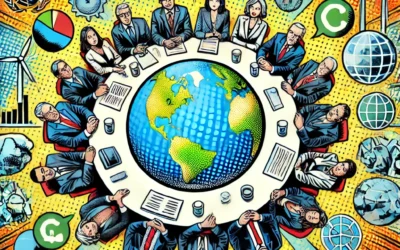Water Withdrawals: How They Affect the Climate and How to Reduce Them
Water withdrawals are the amount of freshwater taken from ground or surface water sources, either permanently or temporarily, and used for various purposes, such as irrigation, industry, or domestic use. According to the OECD Water Withdrawals Indicator, the average water withdrawals per capita in the OECD countries were 1,017 m3 in 2019, with a wide variation across countries. In this article, we will explore how water withdrawals affect the climate, and what we can do to reduce them.
How Water Withdrawals Affect the Climate
Water withdrawals affect the climate in several ways, depending on the source, amount, and use of the water. Some of the main effects are:
Greenhouse gas emissions: Water withdrawals can generate greenhouse gas emissions, which cause global warming and climate change. The emissions occur at different stages of the water cycle, such as extraction, transport, treatment, and use. The most significant source of emissions is the energy use associated with water, especially for pumping, heating, and cooling. The energy use depends on the type and efficiency of the energy sources, such as fossil fuels, renewables, or nuclear. According to the Global Material Resources Outlook to 2060, water withdrawals could account for 15% of global energy-related greenhouse gas emissions by 2060, if no action is taken to reduce them.
Water scarcity and stress: Water withdrawals can also reduce the availability and quality of water resources, and create water scarcity and stress. Water scarcity occurs when the demand for water exceeds the supply, while water stress occurs when the demand for water approaches or exceeds the sustainable supply. Water scarcity and stress can affect the water cycle and the hydrological balance, and lead to drought, desertification, and salinization. Water scarcity and stress can also affect the ecosystems and the biodiversity that depend on water, and the human health and well-being.
Water pollution and eutrophication: Water withdrawals can also contaminate and degrade water resources, and cause water pollution and eutrophication. Water pollution occurs when harmful substances, such as chemicals, nutrients, or pathogens, are introduced into water bodies, while eutrophication occurs when excessive nutrients, such as nitrogen or phosphorus, cause algal blooms and oxygen depletion in water bodies. Water pollution and eutrophication can affect the water quality and suitability, and lead to diseases, infections, and toxicity. Water pollution and eutrophication can also affect the ecosystems and the biodiversity that depend on water, and the human health and well-being.
What We Can Do to Reduce Water Withdrawals
Water withdrawals can be reduced by adopting and promoting the principles and practices of the water efficiency, which aims to minimize the use of water resources and maximize their value and utility. Some of the ways to reduce water withdrawals are:
Reduce: Reduce refers to decreasing the demand and consumption of water, by changing the behavior and preferences of the consumers and the producers. Reduce strategies include improving the awareness and education of the environmental impacts and costs of water, implementing and enforcing the policies and regulations that discourage or limit the use of water, such as tariffs, quotas, or bans, and promoting and supporting the voluntary and social initiatives and movements that advocate for the reduction of water, such as the water conservation, the water footprint, and the water stewardship.
Reuse: Reuse refers to extending the life and use of water, by treating, purifying, or recovering it. Reuse strategies include improving the technology and innovation of the water treatment and purification processes and systems, to make them more efficient, effective, and diverse, implementing and enforcing the policies and regulations that encourage or require the reuse of water, such as standards, labels, or incentives, and promoting and supporting the markets and platforms that facilitate the reuse of water, such as the wastewater reuse, the rainwater harvesting, and the greywater recycling.
Recycle: Recycle refers to returning and restoring water to its natural source, by discharging, infiltrating, or replenishing it. Recycle strategies include improving the technology and innovation of the water discharge and infiltration processes and systems, to make them more clean, safe, and productive, implementing and enforcing the policies and regulations that incentivize or regulate the recycle of water, such as subsidies, permits, or penalties, and promoting and supporting the collection and monitoring of water, to make it more accessible, convenient, and compatible for recycle.
Conclusion
Water withdrawals are the amount of freshwater taken from ground or surface water sources, either permanently or temporarily, and used for various purposes, such as irrigation, industry, or domestic use.
Water withdrawals affect the climate in several ways, such as greenhouse gas emissions, water scarcity and stress, and water pollution and eutrophication.
Water withdrawals can be reduced by adopting and promoting the principles and practices of the water efficiency, such as reduce, reuse, and recycle. Water withdrawals are a challenge and an opportunity for climate action, and can contribute to the goals and targets of environmental policy and sustainable development.






